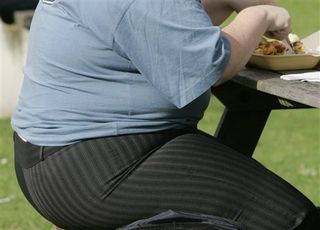Hoodia Weight-Loss Plant Lightens Wallets

The world has descended once again on southern Africa's Bushmen, the traditional hunter-gatherer people featured in the 1980 movie "The Gods Must Be Crazy." This time the crazy ones are Americans and Europeans, hungry for a magical plant with the power to make humans shed pounds. The plant is a tiny cactus-like succulent called hoodia gordonii, one of a dozen hoodia species growing in Namibia, Angola and South Africa. The Bushmen have long nibbled on this plant to suppress their appetite during long days of hunting for food. Word got out, and pharmaceutical companies moved in, hoping to isolate hoodia's appetite-suppressing property and turn it into a billion-dollar drug to control the raging obesity epidemic. Hoodia gordonii, in its natural form, quite plausibly could suppress hunger and aid in weight loss. For now, however, there is simply no evidence that unregulated and over-hyped hoodia dietary supplements sold by fly-by-night companies—costing $50 or more for a month supply and containing little if any of the active ingredient in hoodia—can deliver anything more than removing weight from your wallet. As seen on TV, sort of Hoodia advertisements claim this weight-loss supplement has been featured on Oprah, ABC, CBS, BBC and more. The Oprah reference is particularly widespread—a Google search for "Oprah" and "hoodia" yields nearly 800,000 hits—and for good reason. The advertisers know Oprah's power. If Oprah said camel spit promoted weight loss, her enthusiastic legions would buy it by the bucket. But "feature" doesn't mean endorse. The Oprah connection dates to a 2005 article in O, written by independent journalist Mary A. Fischer, that actually states there's no proof hoodia supplements work. The word "hoodia" appears nowhere on the official Oprah website. CBS' 60 Minutes offered an upbeat report about natural hoodia, with correspondent Lesley Stahl scoring a prime junket to South Africa to try some fresh hoodia herself. Yet while Stahl said hoodia suppressed her appetite, the report explained that the supplements are garbage. No drug, only liars Hoodia gordonii is a rare plant that takes at least five years to mature. And only the Bushmen have the right to harvest it. There is not enough of the real stuff to quench the appetite of all the dieters wishing to squelch their appetite. A South African national laboratory isolated the hoodia ingredient thought to control appetite, called P57, and patented this in 1996. They sold the rights to a UK-based company named Phytopharm to develop a drug. Many years have gone by, but a hoodia pill remains elusive. P57 is too difficult to synthesize. Phytopharm's one-time partner, Pfizer, dropped out of the deal in 2003 because of manufacturing difficulties. Phytopharm plods along and has now invested in a hoodia plantation. In the meantime, while there are no convincing studies that demonstrate that hoodia in any form suppresses appetite, there are dozens of dietary supplement hucksters selling so-called hoodia pills that cannot possibly contain any significant amount of hoodia. They are either outright lying about the contents, or they are using hoodia plant parts with no active ingredient. Hoodia believe Hoodia websites offer the typical mishmash of imaginative history, dubious science and a plethora of testimonials. The story goes that the Bushmen have known this weight loss secret for years—27,000 years, to be precise, which is a remarkable bit of anthropology, seeing how we're not even sure when bread-making started. In reality, the Bushmen's trim physique is a result of wandering around the desert in the hot sun for tens of miles each day looking for food. The combination of extreme caloric exertion and a scarcity of food tends to result in a lack of obesity, with or without hoodia. As for testimonials, "I've tried every diet out there..." begins one on the Hoodoba website. This, of course, is to make the reader think: "Gee, this guy is desperate and gullible, maybe I should put my trust in him." Real science To reassure consumers of the efficacy of Hoodoba diet pills, the Hoodoba site goes on to quote the likely imaginary Prof. P. Ivanov of the likely imaginary NewLife Health Institute. If Ivanov exists, he hasn't published any papers in the last 57 years. How can you know? You can check the real science behind any scientist or any dietary supplement at PubMed, (www.pubmed.gov), with over 17 million citations from over 19,000 biomedical and life science journals dating back to 1950. There are only a couple of studies on hoodia, and these are about isolating P57. Sadly, South Africa, home to hoodia, has the highest rate of obesity on the African continent, nearly comparable with the United States. This is the plight of modernization. South Africa is one of the wealthiest nations in Africa; and as in all emerging economies, wealth and automation bring with it obesity. Christopher Wanjek is the author of the books “Bad Medicine” and “Food At Work.” Got a question about Bad Medicine? Email Wanjek. If it’s really bad, he just might answer it in a future column. Bad Medicine appears each Tuesday on LiveScience.
- Americans Fall Prey to Weight-Loss Supplement 'Hype'
- Scientists Developing 'Invisible Diet'
- Diet Strategies That Really Work
Sign up for the Live Science daily newsletter now
Get the world’s most fascinating discoveries delivered straight to your inbox.

Christopher Wanjek is a Live Science contributor and a health and science writer. He is the author of three science books: Spacefarers (2020), Food at Work (2005) and Bad Medicine (2003). His "Food at Work" book and project, concerning workers' health, safety and productivity, was commissioned by the U.N.'s International Labor Organization. For Live Science, Christopher covers public health, nutrition and biology, and he has written extensively for The Washington Post and Sky & Telescope among others, as well as for the NASA Goddard Space Flight Center, where he was a senior writer. Christopher holds a Master of Health degree from Harvard School of Public Health and a degree in journalism from Temple University.
